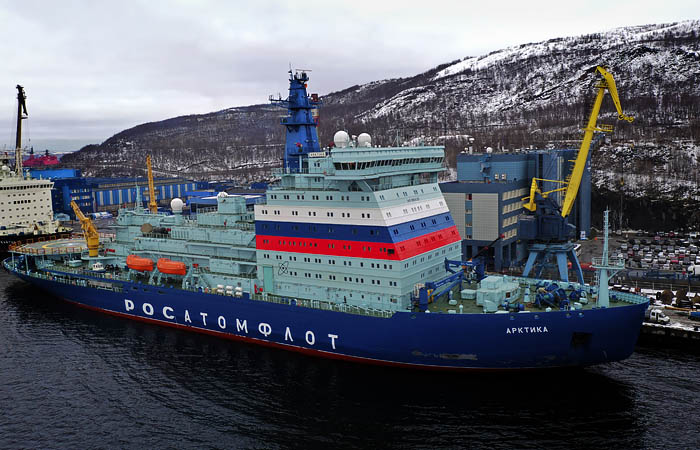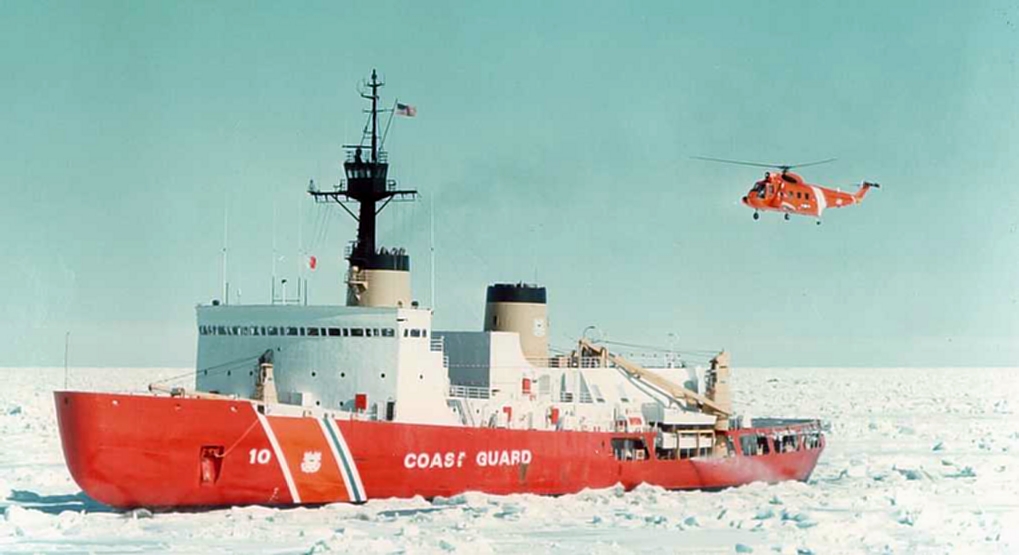The Arctic is one of the regions hit hard by global warming. With its ice melting at an accelerated pace, the prospect of a ‘Polar Silk Route’ is garnering more attention internationally.
Rafale, LCA Tejas Exhibit Their Might At Dubai Air Show; IAF Says Indian Fighters Displayed ‘Superior Flying Ability’
Major powers such as China, Russia, the US, Japan, India as well as the European Union are well aware of the strategic and economic importance of the route.
Given the geographical positioning of Russia coupled with the UNCLOS (United Nations Convention on the Law of the Sea) rules, Moscow enjoys the dominant position in the Arctic.
China also knows that if it doesn’t initiate any steps, it will be too late for Beijing to have any influence over the proposed Arctic Silk Route.
According to the South China Morning Post, China plans to build a heavy icebreaker and semi-submersible heavy lift ships, big enough to move other vessels, in the next five years to boost its maritime activity. The massive icebreaker will be used for expeditions along China’s ‘Polar Silk Road’ trade route, a part of the ambitious Belt and Road Initiative.
China has been rapidly strengthening its maritime force, and with the forthcoming introduction of this ship, China is attempting to seize the opportunity.
Citing the notification released by China’s transport ministry, SCMP stated that a design for the icebreaker is expected to be completed by 2025. Furthermore, “major advancements” in the construction of a semi-submersible rescue ship, a massive vessel with a displacement of 100,000 tonnes were expected during that time frame, according to the report.
The design of another semi-submersible recovery ship that might be used for deep-sea hauling of up to 5,000 tonnes has been given a three-year deadline.
As Biden Meets Xi, Taiwan Fears China’s ‘Gray Zone’ Strategy Can Choke The Island By Blocking Its Access To Harbors & Airports
The new ships are part of China’s five-year development plan, which was approved earlier this year. As part of the plan, China has set a vision towards deep-ocean and polar exploration, specialist vessels such as those to support deep-sea operations and the heavy icebreakers, and a plan to develop offshore floating nuclear power stations.
In 2018, China unveiled its Polar Silk Road concept, declaring itself a “near-Arctic power” and encouraging businesses to create infrastructure and conduct commercial trial voyages to bring possibilities to the Arctic.
Since then, Chinese organizations have established new freight routes and conducted research missions in the region, and Beijing has declared plans to send a satellite to follow maritime routes and monitor changes in sea ice by 2022.
China is also increasing its footprint in Antarctica, where it has four research stations and is building a fifth one, which has heightened geopolitical tensions and competitiveness, particularly with the US and Russia.
Pakistan’s JF-17 Fighters Armed With Deadly Chinese Missiles Could Pose A Huge Threat To Indian Navy In IOR
China’s polar fleet consists of two conventionally powered medium icebreakers: the Xuelong, built by Ukraine in the 1990s, and the Xuelong 2, which began service in 2019 and was built in China with design assistance from Finland.
Does Moscow Have An Edge?
Moscow considers the development of the Arctic to be a historic duty, and it has already initiated massive programs to harness the region’s natural resources. With five nuclear-powered icebreakers in operation and five more on the way, Russia boasts the world’s most powerful fleet.
It intends to deploy the vessels to ensure that it can ship gas via the Arctic all year. It is currently the only country in the world having nuclear-powered icebreakers.
‘World’s Most UnLoved Country’ – Why China’s Likability Factor Is Dropping Even With Key Allies Like Russia, Pakistan?
The Arktika-class ship is the most powerful one to date with a displacement of 33,000 tonnes and the ability to break through 3 meters of ice. A new Lider-class nuclear icebreaker is projected to be delivered in 2027, with a displacement of 70,000 tonnes and the ability to break up to 4 meters of ice.

Russian President Vladimir Putin has identified the Arctic issue as a strategic priority, and state-owned firms including Gazprom Neft, Norilsk Nickel, and Rosneft have substantial oil, gas, and mineral extraction projects in the Arctic.
Rosatom State Atomic Energy Corporation, which already owns a fleet of five icebreakers and a container ship, will construct four more nuclear-powered boats.
The construction of each ship costs more than $400 million and takes five to seven years and involves over 1,000 individuals. The United States and China both use diesel-electric icebreakers, thus no other country has a fleet equivalent to Russia.
?️#Arktika, the first of @Russia's new nuclear-powered Project 22220 icebreakers, the largest and most powerful such ship in the world at present, has reached the❄️#NorthPole. pic.twitter.com/F052UnH4lr
— Russia ?? (@Russia) October 5, 2020
American Icebreaker Fleet
The US is modernizing and growing its arctic fleet. The Polar Star, a heavy icebreaker, and the Healy, a medium icebreaker, are both in service with the US Coast Guard. It has placed orders for three new heavy icebreakers, the first of which will arrive in 2024.
The American icebreaker fleet, which was never particularly large. Its third icebreaker broke down in 2010 and hasn’t operated since then due to its terrible condition.

The Polar Star, which is 44 years old, is proving tough to keep in service. According to the US Naval Institute News, the ship had two severe malfunctions in 2016. The Trump administration had ordered an assessment of the country’s icebreaker fleet, with the goal of revamping the same by 2029.
Concerns were raised regarding Chinese ambitions in the Arctic and Antarctic regions, prompting the review. The United States Coast Guard plans to build six new icebreakers to replace the two aging ones currently in service.
- Contact the author at ashishmichel@gmail.com
- Follow EurAsian Times on Google News




